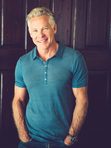Mark Sisson's Blog, page 279
December 1, 2014
Dear Mark: My Primal Investments
Cyber Monday Sweepstakes: Thrive Market, best described as Whole Foods meets Costco online, is giving you a chance to win hundreds of dollars worth of your favorite Primal foods and a free annual membership to their site. Thrive is on a mission to help make healthy living available and affordable to all American families. I’m a huge fan of what they’re doing. So much so that I’ve become an investor in the company. But more on that below. Enter the sweepstakes here, and you could be one of the lucky winners!
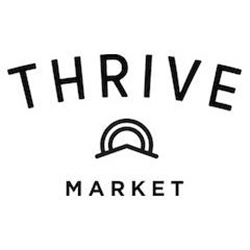 For today’s edition of Dear Mark, I discuss one of my very favorite subjects – investing in oneself – in relation to this whole Primal thing. I explain my theory of investing, why you should invest in yourself even if you’re working a 9 to 5 and have no desire to be an entrepreneur at all, and I give the story of how I decided to quit the (well-paying and stable) rat race and make the ultimate investment in myself and my future: starting Primal Nutrition. Then I discuss the Primal-friendly start-ups in which I’m currently invested, including a really exciting new venture that I think everyone here is going to dig (accompanied by a simple and potentially lucrative contest).
For today’s edition of Dear Mark, I discuss one of my very favorite subjects – investing in oneself – in relation to this whole Primal thing. I explain my theory of investing, why you should invest in yourself even if you’re working a 9 to 5 and have no desire to be an entrepreneur at all, and I give the story of how I decided to quit the (well-paying and stable) rat race and make the ultimate investment in myself and my future: starting Primal Nutrition. Then I discuss the Primal-friendly start-ups in which I’m currently invested, including a really exciting new venture that I think everyone here is going to dig (accompanied by a simple and potentially lucrative contest).
Let’s go:
Dear Mark,
I’m a big believer in the concept of putting your money where your mouth is. For example, if you value humanely-raised animals, and grass-fed cows, you should be willing to spend the extra bucks on them to support the farms and purveyors, thus making them more readily available to more people, and hopefully, ultimately, bringing the costs down, too. I’m always looking for companies that have similar values to mine as part of their mission statement. I heard you’re an investor in Exo cricket bars. Is that true? What companies do you think are making a positive impact on the world? I’d be very interested in your opinion. Grok on, Mark!
Dale
As a young entrepreneur, the single best piece of advice I ever received was to invest in myself whenever appropriate, rather than following the more conventional wisdom of setting aside small sums of money and investing in passive things like common stocks, mutual funds or real estate for some future retirement. Don’t get me wrong: those do have a place in many a retirement strategy, and I don’t want to lead anyone down a path that’s wrong for them, but I always found myself feeling less in control of those types of investments. Furthermore, I really don’t see myself “retiring” ever. And whenever I have made those traditional investments, I seem either to have lost money, worried myself sick over uncontrollable events, or simply been less than satisfied with the outcome.
On the other hand, whether it was money spent in furthering my education, making sure my health was optimized, gaining useful experience by taking calculated business risks I might not otherwise have taken, or simply reinvesting profits back into my business – I have found that the main benefit to investing in myself has always been the degree of control I have had over those investments. It has instilled both a sense of responsibility and a feeling of empowerment. Of course, much of this presupposes that you are working for yourself or have plans to do so at some point. If that’s not something you’re interested in undertaking, this advice may not apply. At least, not financially. However, I still think the concept of “investing in self” applies to everyone, even if it’s “investing” in your own health with proper diet and exercise and sleep habits so you can enjoy your time, family, and money better. It’s not necessarily about money, but about giving back to yourself. That could mean investing your free time into a little extra sleep, a vacation with the family, that good book you’ve had sitting beside your bed for months collecting dust, or a nightly walk around the neighborhood, instead of using it to “get ahead” at work or “catch up” on email.
I left a comfortable and well-paying job to start Primal Nutrition Inc in 1997. At the time, I had a wife and two small children, and no money in the bank – but I had a vision of how I wanted to live my life. I wanted to be on the cutting edge of a health movement about which I was incredibly passionate. While some might have said that it was a risky move given my circumstances (and it was), I knew deep down that it was what I needed to do to feel fulfilled. I also knew deep down that it would succeed eventually on some level if I stuck with it.
As my business has grown, I have reinvested profits and other resources whenever and wherever appropriate for nearly 18 years, and I still look for ways to invest in myself. But these days there are other investment opportunities that arise outside my company which still allow me to take advantage of my knowledge, experience, influence and money.
The Primal/Paleo community has grown, too, and with it the business opportunities. There are probably hundreds of small companies entering the paleosphere with an intent to fulfill a perceived demand or better yet, to create a new demand that requires fulfilling.
I started angel investing about five years ago and have helped fund several interesting start-ups. Among them, EXO, the cricket bar company; Sirens and Titans, a gym in Los Angeles; and Bona Dea, a maker of gluten-free baking flours and ready-to-eat baked goods. In all my current investments, I serve as an advisor as well as investor – again, it’s important to me that I have a degree of influence on my investments.
More recently, I invested in one of the most compelling start-up ideas I have seen in a long while. It’s called Thrive Market and I believe it will change how all of us gain access to healthy foods. The concept is surprisingly simple: offering top brand proprietary packaged healthy foods at discount prices online. It’s like Costco meets Whole Foods online. Thrive is membership-based and offers discounts of 25-50% off what you might normally expect to pay in a regular health food store (or even at competitive online venues). While it is perfect for accessing your favorite Paleo/Primal, gluten-free products, it also affords an opportunity for smaller companies with awesome products that might not be able to get major distribution in places like Whole Foods to become available nationwide. As part of the “giving back” philosophy that the founders exemplify, for each membership sold a free membership is awarded through select charities to a family in need. The membership fee is $59 annually. I made that back in savings on my first order! If you are someone who has struggled with the costs of certain elements of the Primal Blueprint or paleo eating strategies, Thrive was designed for you.
Investing in companies like Thrive, EXO, Bona Dea, and Sirens and Titans isn’t just financial for me. As you rightly point out, Dale, it’s a way to ensure the movement I’ve grown to love and fight for continues to grow and be sustained. If we want Primal to continue growing, we’ll need to broaden our horizons. We’ll need mainstream interest in insect protein and nutrition – which is what EXO is doing. We’ll need to have gluten-free options that taste good and are widely available for those folks who just don’t want to give up grains and baked goods and aren’t interested in baking themselves. We’ll need to support progressive fitness spaces (like Sirens and Titans) and, maybe most importantly, we need to figure out a way for the average everyday consumer to gain access to affordable, high-quality Primal-friendly foods. That’s where Thrive Market comes in.
Thrive just launched. To commemorate the start of a beautiful friendship, we’ve put together a sweepstakes. It’s really simple:

Enter the Thrive Market Sweepstakes Here.
All you need to do to enter is register an account for free, and then share the sweepstakes page on Facebook.
That’s it! One person will receive $500 that can be used at Thrive; 20 people will get free Thrive memberships for a year. The sweepstakes ends on Sunday. Try it out and let me know what you think. It’s only going to get better.
That’s me. How about you guys? How are you investing in yourself and the Primal community at large?



November 30, 2014
Weekend Link Love – Edition 324
 My interview with Focal Upright, makers of the best standup workstations in the industry.
My interview with Focal Upright, makers of the best standup workstations in the industry.
Research of the Week
The morbidly obese have “accelerated intestinal glucose absorption.”
A bunch of obesity researchers come out hard against the usefulness of “calories in, calories out.”
New Primal Blueprint Podcasts
Episode 44: Interview with Mark Allen – Triathlon Legend, Author, and Coach: Host Brad Kearns has a fascinating chat with the best triathlete in history about how he managed to balance life and training, his tips for athletes interested in accomplishing the same, and much more.
Each week, select Mark’s Daily Apple blog posts are prepared as Primal Blueprint Podcasts. Need to catch up on reading, but don’t have the time? Prefer to listen to articles while on the go? Check out the new blog post podcasts below, and subscribe to the Primal Blueprint Podcast here so you never miss an episode.
The Many Wheys Whey Can Improve Your Health
Primal Blueprint Podcasts – Lend Us an Ear!
The Definitive Guide to Stress, Cortisol, and the Adrenals: When ‘Fight or Flight’ Meets the Modern World
Change Coming to the Dietary Guidelines?
Interesting Blog Posts
Instead of playing brain training games, healthy older adults should just hang out with their friends.
The midlife crisis may be unavoidable, but we’re probably also destined to eventually get over it and be happier than ever.
Media, Schmedia
Turns out that sitting is probably pretty bad for your mental and emotional health, too.
Preterm infants under medical care depend on an “environment almost entirely composed of plastic,” (video) and it’s probably affecting their hormones and harming their health and normal development.
Everything Else
Australian actor Damon Gameau went on a 60-day low-fat diet high in “healthy” high-carb foods like fruit juice, granola bars, and low-fat yogurt and ended up gaining 10 cm of belly fat and a prognosis of impending fatty liver. Watch for That Sugar Film, the documentary about his experience, in 2015.
I’ve always been fascinated by those words in foreign languages that can’t be translated directly into English words. Here are a few examples (plus a new book about them). Komorebi (Japanese for “the sunlight that filters through the leaves of the trees”) is my favorite. What’s yours?
Retail chicken across the United Kingdom is very likely to be contaminated with campylobacter.
The homeland of the Masai is being sold off to become private hunting grounds for the Dubai royal family.
They may be cute and vaguely dog-like, but seals aren’t endangered and their meat is actually quite sustainable.
How successful has Whole Foods been at broadening its customer base (and helping lower income people eat healthier) with stores in Detroit?
Recipe Corner
These chili, coriander, and sweet potato biohacker’s beef sausages would be the perfect post-workout meal.
Paleo baked apple. A simple yet impressive dessert.
Time Capsule
One year ago (Nov 30 – Dec 6)
Should You Be Eating High-Fat Dairy? – Probably, if you can handle it.
In the Pursuit of Health, Should You Aim for Progress or Perfection? – Find out which way(s) work best.
Comment of the Week
This year I have a delicious whey protein rub for the big turkey. Extra gainz.
– I’d love that recipe if you’ve got it handy.
You CAN Lose Weight and Get Healthy. Find Out How>>



November 29, 2014
Shrimp and Mussel Fra Diavolo
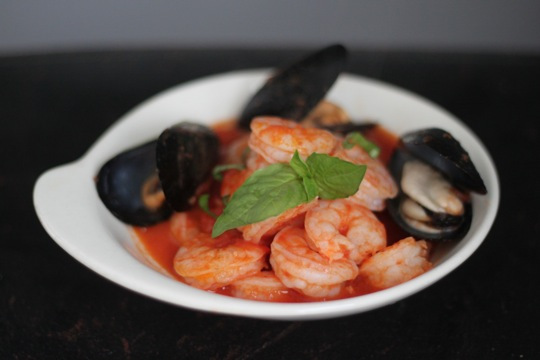 Shrimp Fra Diavolo is an Italian-American creation of shrimp tossed into a spicy sauce made from little more than tomatoes, garlic and red pepper flakes. This recipe throws in mussels too, because it seems like a crime to make a seafood dish without them. Namely, because mussels are delicious, but also because tucked into each blue-gray shell is a healthy serving of protein, B-vitamins, selenium, zinc, magnesium and manganese.
Shrimp Fra Diavolo is an Italian-American creation of shrimp tossed into a spicy sauce made from little more than tomatoes, garlic and red pepper flakes. This recipe throws in mussels too, because it seems like a crime to make a seafood dish without them. Namely, because mussels are delicious, but also because tucked into each blue-gray shell is a healthy serving of protein, B-vitamins, selenium, zinc, magnesium and manganese.
You could make this dish entirely with mussels and turn it into Mussels Fra Diavolo, if only shrimp didn’t play such a key role in transforming the tomatoes into a rich and flavorful sauce instead of just bland marinara. The trick? Browning shrimp shells then simmering them in broth creates a quick but really flavorful seafood stock. The stock can then be used as a base for any soup, bisque, chowder or sauce you make.
Serve this seafood Fra Diavolo over a mound of sautéed greens (like Swiss chard) or with cauliflower rice or celery root noodles.
Servings: 4
Time in the Kitchen: 50 minutes
Ingredients:
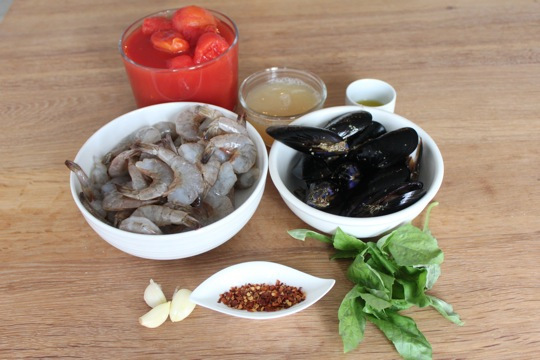
1 1/2 pound uncooked shrimp, shells on (680 g)
1 pound mussels, cleaned and debearded (455 g)
1 28-ounce can whole peeled tomatoes (794 g)
4 tablespoons extra virgin olive oil (60 ml)
1 cup chicken stock (240 ml)
4 garlic cloves, minced
1/2 to 1 teaspoon red pepper flakes (5 ml)
1/4 cup finely chopped fresh basil (20 g)
Instructions:
Remove the shells from the shrimp and set both the shrimp and shells aside in separate bowls (make sure the shrimp are de-veined).
Pour the can of tomatoes into a colander set over a large bowl to catch the juice. Gently stir and push on the tomatoes to release their juice. Set the tomato juice and whole tomatoes aside in separate bowls. Mash and break apart the tomatoes with your hands.
Heat 2 tablespoons of the olive oil in a large (12-inch) skillet over high heat. Add the shrimp shells and cook, stirring frequently, for 3 to 4 minutes until both the shells and skillet are lightly browned. Add the chicken stock and reserved tomato juice and simmer 8 to 10 minutes.
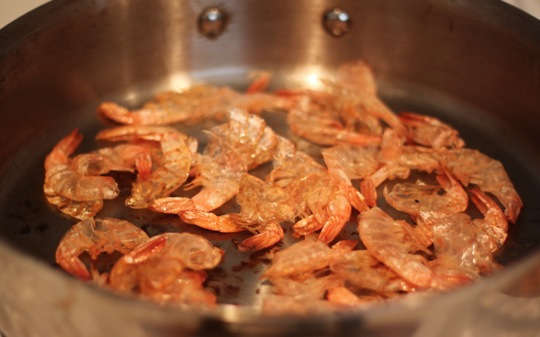
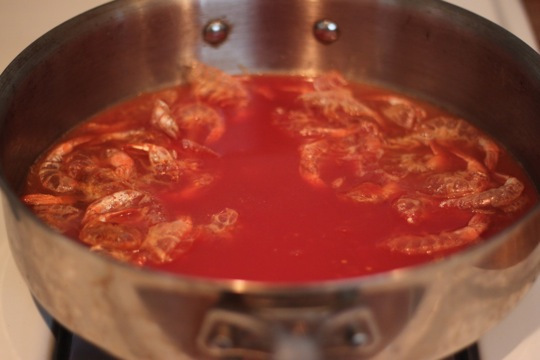
Pour the contents of the skillet into a colander set over a bowl to separate the shrimp shells from the sauce. Discard the shrimp shells.
Turn the heat under the skillet down to medium. Add the remaining 2 tablespoons of olive oil and the garlic and red pepper flakes. Sauté the garlic just until soft. Add the tomato sauce and the bowl of whole tomatoes back to the skillet. Increase the heat slightly and simmer about 5 minutes to thicken to sauce.
Add the shrimp and mussels. Put a lid on the skillet and cook for 3 to 5 minutes, shaking the pan a few times, until the shrimp are pink and the mussels have opened. Stir in the basil. Add salt to taste.
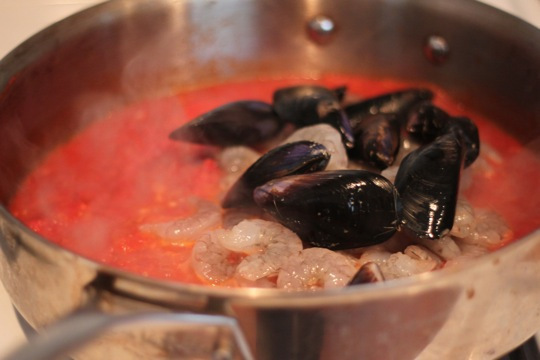

Not Sure What to Eat? Get the Primal Blueprint Meal Plan for Shopping Lists and Recipes Delivered Directly to Your Inbox Each Week



November 28, 2014
How I Ditched My Diabetes Medication and Found a New Life Plan
It’s Friday, everyone! And that means another Primal Blueprint Real Life Story from a Mark’s Daily Apple reader. If you have your own success story and would like to share it with me and the Mark’s Daily Apple community please contact me here. I’ll continue to publish these each Friday as long as they keep coming in. Thank you for reading!
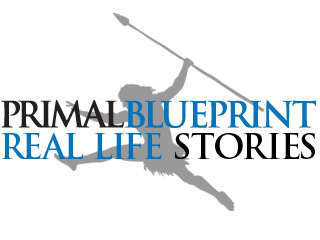 The Primal Blueprint lifestyle has positively changed my life, the lives of my family members, and a growing number of friends. I’m delighted to report that I (at age 59) have lost 42 pounds, 6% of my body fat and 25 inches. My husband (age 64) has lost 31 pounds, my grown children and their families have lost weight, look great, and we all have become much healthier, thanks to the Primal Blueprint diet and lifestyle. And, perhaps best of all, my fasting glucose readings have dropped about 70 points, to below diabetic level.
The Primal Blueprint lifestyle has positively changed my life, the lives of my family members, and a growing number of friends. I’m delighted to report that I (at age 59) have lost 42 pounds, 6% of my body fat and 25 inches. My husband (age 64) has lost 31 pounds, my grown children and their families have lost weight, look great, and we all have become much healthier, thanks to the Primal Blueprint diet and lifestyle. And, perhaps best of all, my fasting glucose readings have dropped about 70 points, to below diabetic level.
In September 2008, I was suffering from worsening type 2 diabetes (on medication and under threat of starting injectable drugs), at the heaviest weight of my life (179 pounds, at 5′ 2” tall), and had a host of constant irritations. I had colds, headaches, stomachaches, lethargy, sweet cravings, horrible self-image, and basically felt lousy all the time. My husband was also at his heaviest weight, and complained of heartburn, irregular heartbeat, backaches, frequent sunburns, carb cravings and high blood pressure. All of these problems have since vanished, thanks to the Primal lifestyle.
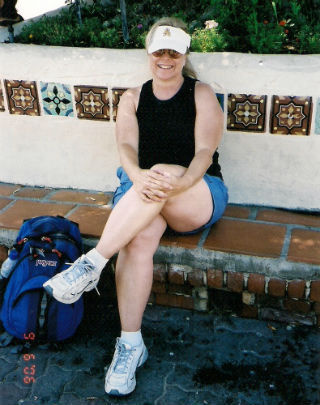 I’m one of those people who tried just about every diet: low-fat, cabbage-soup, Atkins, smaller portions, and more. I lost weight each time, but I always became overwhelmed by hunger, feelings of deprivation and frustration. Plus, I only regained all the weight plus more. After 20 years of unsuccessful dieting, I decided to “just eat without restriction,” which resulted in a gain of 15 pounds, since I chose to “just eat” dessert with almost every meal! I laugh now, but at the time, I had zero self-respect.
I’m one of those people who tried just about every diet: low-fat, cabbage-soup, Atkins, smaller portions, and more. I lost weight each time, but I always became overwhelmed by hunger, feelings of deprivation and frustration. Plus, I only regained all the weight plus more. After 20 years of unsuccessful dieting, I decided to “just eat without restriction,” which resulted in a gain of 15 pounds, since I chose to “just eat” dessert with almost every meal! I laugh now, but at the time, I had zero self-respect.
The Primal Blueprint book was sent to me by a friend in early 2009. I stayed up all night reading it. I was excited—it made so much sense! But I was also skeptical—I had followed the Atkins diet to the letter, lost 25 pounds, then gained it all back. I did not yet understand the power of real food! It took a while to sink in (I was in denial), and even longer to implement entirely (almost 6 years!).
We began to make small changes. We cut out most desserts, cut back on grains, ate more veggies, and started reading labels. In August of 2009, I went entirely grain-less. We began to take long walks regularly. We created eating and exercise diaries, in which we recorded our daily weight, foods eaten and exercises (I still do!). I was probably 75/25 Primal for the first couple of years. By September of 2010, I had lost 19 pounds, exercised about 5.5 hours per week, and my fasting glucose levels had dropped from about 170 to about 135.
Then I began to fall back into some of my old bad habits. I ate “a treat” here and there (which, in review, was several times a week), slacked off on exercise, worked too many hours, and, by 2012, I had regained seven pounds. I was pretty darned depressed.
Looking for support and hoping to get myself back on track, I started a private group on Facebook called the F’nE Club (for food and exercise). As it turns out, the group was to bring me success! Several of us, including my daughter and daughter-in-law (both members of the group), decided to do the The Primal Blueprint 21-Day Total Body Transformation together. I bought the book for each participating member.
We started The Primal Blueprint 21-Day Total Body Transformation Program on 4/29/2012. Using the F’nE Club as our connection to discuss, complain, share recipes, and report on pounds lost, we compared notes daily (sometimes hourly!), and used one another for support. It was fun! I lost eight pounds, but more importantly, I woke up to the fact that I had been cheating myself. I had not been eating nor living nearly as primally as I thought I had. I began creating new habits: truly eating only real primal foods, getting out of my chair and circling the office every half-hour at work, taking a pleasant stroll each morning in my new Vibram 5 Fingers, spending 15 minutes every afternoon in the sun, doing my PEM workouts, sprints, and walks, fasting for 24 hours once a week, and cooking at home much more often (we love The Primal Blueprint Cookbook—especially the Zucchini Egg Bake and the Jambalaya).
I was so delighted with the results of the 21-Day Total Body Transformation, that, a week later, I did it again! And again a few months later! I lost another 10 pounds, and I found a new life plan for myself.
Also, my glucose levels continued to drop. By the end of 2012, my doctor approved ditching all diabetic medication! Freedom!
In January 2013, my husband and I retired from work—hurrah! To celebrate, we treated ourselves to a 28-day spring cruise of the South Seas. Using the techniques we had learned, we ate primally with ease (delicious fresh fish and veggies daily, sharing a tiny dessert most evenings), walked the decks, snorkeled, hiked, and had a complete blast. I only gained two pounds! Since then, we have traveled extensively and not gained weight. In fact, I have steadily lost weight while enjoying the heck out of exploring!

 While on the cruise, I discovered another key to my weight loss and health puzzle: Zumba dancing! The Zumba workout is the perfect exercise for me. It’s interval bursts of hard exercise—jumping, kicking, leaping, high-knee running in place—inter-spaced with short periods of rest, upper body weights, squats and lunges are ideal. And it’s all to the beat of international music with the fun atmosphere of a party of friends! I joined a local Zumba class upon arriving home in June of 2013, and I now attend three awesome one hour classes a week, from which I leave drenched but happy. (A classmate’s fitbot calculated that we burn over 1,000 calories per session.) After class, I do a short PEM workout at home. Sprints and lifting heavy things? Check! Three evenings a week, my hubby and I walk for an hour in our local park (a relaxing, peaceful time for us to talk), and we also hike, bike, kayak and swim frequently. Long and slow? Check! All together, I now typically get 10 hours of exercise a week.
While on the cruise, I discovered another key to my weight loss and health puzzle: Zumba dancing! The Zumba workout is the perfect exercise for me. It’s interval bursts of hard exercise—jumping, kicking, leaping, high-knee running in place—inter-spaced with short periods of rest, upper body weights, squats and lunges are ideal. And it’s all to the beat of international music with the fun atmosphere of a party of friends! I joined a local Zumba class upon arriving home in June of 2013, and I now attend three awesome one hour classes a week, from which I leave drenched but happy. (A classmate’s fitbot calculated that we burn over 1,000 calories per session.) After class, I do a short PEM workout at home. Sprints and lifting heavy things? Check! Three evenings a week, my hubby and I walk for an hour in our local park (a relaxing, peaceful time for us to talk), and we also hike, bike, kayak and swim frequently. Long and slow? Check! All together, I now typically get 10 hours of exercise a week.
On 4/24/2014, I reached my weight goal: 40 pounds lost! That was six months ago, and since I have maintained easily, and even lost another two pounds without trying. My weight dropped from 179 to 137. My fasting blood glucose reading is typically about 100 these days, dipping into double-digits occasionally! The Primal Blueprint plan is my lifestyle now and it’s easy and enjoyable. It’s the way I will eat and live for the rest of my life.

Through trial and error, my Primal “ME” food plan today looks like this:
We eat two meals a day (brunch and dinner) resulting in about a 15 hour fast daily. Our primal brunch includes pastured eggs, lots of organic veggies, pastured butter, herbs from my garden, coconut milk, tea, uncured bacon or sausage, sometimes coconut flour/milk/oil pancakes, fresh berries or other fruit, raw nuts, and/or plain Greek pastured yogurt sweetened with stevia.
Dinner is pastured, grass-fed, organic meat and/or fish (when available—we choose the best options possible when on the road), lots of veggies, salads with vinaigrette, butter, and occasionally coconut products, raw whole-milk cheese or sweet potatoes.
I relish my 1/2 ounce of dark chocolate daily, and enjoy a full fat, full sugar dessert of my choice twice a month (though there are few sweets I can eat these days without stomach pain and a sweet-hangover-of-awfulness afterward—they are becoming less appealing all the time!).
Recently I have been experimenting with resistant starch to lower my glucose spikes after exercise (with good results!), so I have included a half-cup of sprouted brown rice cooked in chicken bone broth, cooled and eaten cold, four hours prior to hard exercise.
To prevent my lifelong habit of regaining lost weight, I created this system: I have an allotted weight range of four pounds to allow for fluctuations. When I reach the top of that range (which for me is 140 pounds), I begin “Me Minus,” which I continue until I drop back into range.
Me Minus is Primal, minus these foods: chocolate, sweets of any type, dairy, fruit, nuts and starchy veggies. Pretty much it’s all meats and veggies with fats. Not much fun, but very effective.
These days I rarely have to resort to Me Minus eating because my weight stays low in my weight range fairly effortlessly—my dream come true.
Today, I’m about 90/10 percent Primal. I feel so great, tremendously proud of myself, and amazingly content. What a gift The Primal Blueprint has been! Thanks and Grok on!
Barbie
You CAN Lose Weight and Get Healthy. Find Out How>>



November 27, 2014
What It Means to Be Thankful for Your Health
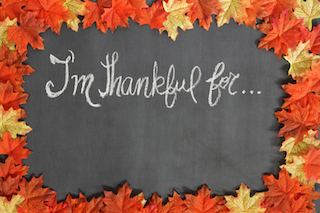 Think back to the last time you had a major cold or flu – the last time you had a fever and body aches so bad your hair hurt. The thousand daggers in your throat, the puffy, burning eyes, the roaring headache, the plugged sinuses and clogged lungs, the crippling fatigue. In the throes, you likely couldn’t imagine (as most of us do) what it was ever like to be healthy. You could scarcely remember what life had been like three days ago when you were lifting weights, lifting your kids, laughing at work, entertaining at home, sleeping soundly. Fast forward, and it’s a Bermuda Triangle of mental discouragement and physical misery. And this is just a cold or flu… (Many people deal with so much worse….) Still, it’s a relatable illustration of an all too common truth: we tend to take our health for granted until it’s suddenly gone.
Think back to the last time you had a major cold or flu – the last time you had a fever and body aches so bad your hair hurt. The thousand daggers in your throat, the puffy, burning eyes, the roaring headache, the plugged sinuses and clogged lungs, the crippling fatigue. In the throes, you likely couldn’t imagine (as most of us do) what it was ever like to be healthy. You could scarcely remember what life had been like three days ago when you were lifting weights, lifting your kids, laughing at work, entertaining at home, sleeping soundly. Fast forward, and it’s a Bermuda Triangle of mental discouragement and physical misery. And this is just a cold or flu… (Many people deal with so much worse….) Still, it’s a relatable illustration of an all too common truth: we tend to take our health for granted until it’s suddenly gone.
Three days prior we may have felt good about our workout performance – or finished it off grudgingly (or opted to skip it entirely.) We may have gotten out of bed noticing we’d had a pretty good night’s sleep – or already been too lost in negative anticipation of the work day ahead to let ourselves feel good. We might’ve appreciated having the energy to keep up with the kids during some sledding or tag at the park – or felt distracted by stress and spent much of the time managing the world on our phones or running through imagined conversations in our heads. Is anything sounding familiar? In a regular day we barely if at all notice our health – until or unless its limitations disrupt our routine or intentions.
What does it mean to be thankful for your health? A lot, I think. At its most basic level it can be a “There but by the grace of God go I” feeling we get when someone we know dies of a heart attack or gets cancer. The news jolts us into awareness of our mortality, health being what keeps us on the other side.
Being thankful for our health, however, means more than gratitude for being alive itself. On yet another level, it means appreciating the capacities allowed by our health – the cognitive ability to practice our profession and remember our children’s names, the physical ability to walk up six flights of stairs when the elevator is being serviced (or when we just feel like it). It’s the security of knowing we can travel to remote places and deal with whatever conditions we encounter. It’s the freedom to put on a pair of skates or skis and try something new without getting wrapped around fear of frailty. It’s about confidence that we have the strength to move most of our own stuff when need arises and take care of our children, tend to our property, and still have energy to enjoy something of everyday life.
Yet, I’d suggest health is even more than capacity itself – more than living, more than functioning. By extension, being thankful for our health means recognizing the deeper dimensions of health itself.
A couple of weeks ago I differentiated health as an absence of obvious symptoms from vitality as a kind of full actualization of energy that feeds all areas of self and life. When we look at health from this vantage point, the question becomes whether we’re living out our well-being. If being grateful for something means appreciating it, are we living in full appreciation of our health or are we taking it for granted, leaving many layers of experience and capacity unexplored – and thereby, unacknowledged.
I’m not trying to evoke any metaphysical suggestion here, but humor me with the illustration for a moment. Let’s say you gave two people the same gift. One person graciously thanked you in the moment but put it in the basement where it collected dust for a few decades. The other offered the same gratitude and put it in his/her living space, using it every day in some way for those decades. Who is more thankful, appreciative of the gift?
I think it’s common to give lip service about gratitude for our health. We’re thankful of course – in theory. Might I suggest that gratitude is something we discover through practice in a lifetime of layers with deeper knowledge and familiarity, through challenge and peak moments – maybe not unlike a rich relationship.
Sometimes I think people cut themselves off from this depth of gratitude by living outside of their bodies to some extent – as a result of trauma, distress or distortion. They take a parsing, hypervigilant, corrective perspective on their bodies and their condition – the body as something to be whipped into shape, deprived, pushed and monitored. That kind of animosity, I’ve found, tends to camouflage some sort of deep-seated fear.
When we allow ourselves to wholly appreciate our health – appreciation being the full living out of gratitude, we use and develop our infinite capacities and likewise find infinite joy in its pleasures. Let’s face it – a utilitarian take on health cuts our physical experience off at the knees. We can not only allow ourselves to enjoy the little things – the sun on your back, the feeling of human touch, the runner’s high, a nap’s recharge, a holiday meal’s flavor, the mind’s recollections. In combination with our physical capacities, they’re all part of our inclusive health.
As so many of us celebrate Thanksgiving here in the U.S., I’d offer this challenge to everyone today. Make the choice to cultivate gratitude for your health. Be more present to your health every day. Explore and expand your abilities. Live out your appreciation for your physical potential by developing it action by action, experiment by experiment. Embrace the small pleasures and challenge yourself to reach for even intimidating achievements and intermittent euphoria.
Make a list later tonight (or whenever you’re moved to do so) of all that your health as done for you this year. What has your health allowed you to try, to experience, to practice, to see, to explore, to feel, to accomplish, to share, to create?
Happy Thanksgiving, everyone. And let me offer my gratitude to each of you for your support and contributions to this community. From the beginning, this blog was a labor of love, so to speak, and what a vision it’s become – because of you all. Best wishes, and thanks for reading. Enjoy your holiday and end to the week.
You CAN Lose Weight and Get Healthy. Find Out How>>



November 26, 2014
Not Just for Bodybuilders: The Many Wheys Whey Protein Can Improve Your Health
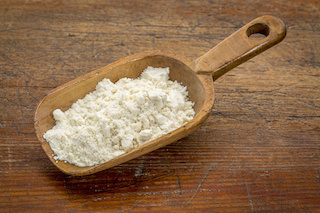 (Apologies for the terrible title. I just couldn’t help myself.)
(Apologies for the terrible title. I just couldn’t help myself.)
When you think of whey protein, what kind of consumer comes to mind?
The six-meal-and-three-snack-a-day bro who keeps a whey shake on his bedside table to maintain those 2 AM gains.
The up-at-dawn-to-beat-rush-hour woman who drinks a shake in the car in lieu of a pastry.
As most people see it, whey protein’s just for people who want more protein in their diets, people who don’t have the time to cook, or people who hate to cook and also need more protein. It’s for weight lifters and athletes. It’s a “poor replacement” for real food. It’s a compromise when life happens. If you can cook and eat real food regularly, the popular story goes, you don’t need whey. Just eat real food – right?
That’s all true to an extent. Real food is the foundation for a healthy diet. But whey protein is much more than a muscle-builder and meal replacer. I’d argue that it deserves a spot on the “supplemental foods” list alongside egg yolks, liver, fatty fish, and all the other foods that are powerful and vital in small doses. I’d also argue that everyone can benefit from whey.
Now, anytime I mention dairy, the issue of tolerance arises. “Sure, Sisson, grass-fed full-fat yogurt sounds awesome. It’s totally healthy and full of nutrients and probiotics, but I break out simply by reading the word ‘casein.’ Can’t do it.” Tolerance has to come up. Dairy just doesn’t work for many people, whether it’s the lactose or the proteins. Luckily, most people can tolerate whey without issue. You’re far more likely to be allergic, sensitive, or intolerant to lactose or casein than to whey. And whey may even be downright anti-allergenic, as whey-based formulas have shown efficacy in the prevention of allergic diseases like asthma and eczema in susceptible children and infants.
You may be among the unfortunate few who cannot tolerate whey, and that’s fine. But an inability to handle Greek yogurt or milk doesn’t preclude you from enjoying whey, so don’t count yourself out until you’ve actually experimented with the stuff. As a new review explains, whey protein offers important and unique benefits to anyone who’s lucky enough to have access.
Whey isn’t just protein. It’s not only a thing you eat to obtain amino acids for increased muscle protein synthesis. It’s also comprised of a host of bioactive components, each with unique effects. You’ve got:
Beta-lactoglobulin
Promotes glutathione synthesis and reduces allergic disease incidence.
Improves retinol/vitamin A absorption and uptake.
Alpha-lactoalbumin
Protects against seizure in epileptic rats.
Increases serotonin levels in plasma.
May have anti-tumor effects.
Lactoferrin
Improves bone healing and prevents bone loss.
Chelates excessive iron, preventing it from fueling infections (many bacteria require iron), increasing inflammation, or becoming carcinogenic.
Has anti-bacterial effects against food pathogens like E. coli and Listeria.
Immuno-globulins (A, M, G)
Neutralize toxins from viruses and bacteria.
Prevent adhesion of bacteria to tissues.
Inhibit bacterial growth.
Those are just a few of the components found in that undigested whey powder sitting in your pantry. Once the whey hits your GI tract, many different bioactive peptides with their own unique effects are formed. In a recent review (PDF), a team of Polish researchers explored the effects of at least nine of these whey-derived peptides. Some improve blood lipids, lower blood pressure, or act as opioid receptor agonists (if you’ve ever seen a milk-drunk baby bliss out after nursing, his opioid receptors are likely being severely agonized by bioactive peptides). Others induce satiety and improve metabolic health biomarkers.
How does all this bioactivity play out? What happens when actual whey is consumed? Well, evidence suggests whey can help in a number of health conditions, like:
Obesity – Whey tends to reduce fasting insulin levels in the obese and overweight (but not healthy prepubertal boys, who could use the growth promotion), increase satiety, reduce food intake, and improve resting energy expenditure. If you’re trying to lose weight or prevent obesity, increasing the amount of energy you burn at rest and decreasing the amount you consume – by manipulation of satiety and fat-burning hormones – are indispensable effects.
Diabetes – Eaten before a meal, whey reduces the glucose spike from the subsequent meal in non-diabetics and type 2 diabetics alike. It achieves this by “spiking” insulin, but transiently; the insulin area under the curve improves even as the immediate insulin response increases. Plus, as seen above, fasting insulin tends to lower in people consuming whey protein.
Fatty liver – In obese women, a whey supplement reduces liver fat (and as a nice side effect increases lean mass a bit). Fatty liver patients also benefit from whey, enjoying improvements in glutathione status, liver steatosis, and antioxidant capacity. Rats who supplement with whey see reduced fat synthesis in the liver and increased fatty acid oxidation in the skeletal muscle.
Stress – In “high-stress” subjects, a whey protein shake improved cognitive function and performance by increasing serotonin levels. The same shake had no effect on “low-stress” subjects. And dietary whey also lowers oxidative brain stress, at least in mice.
Cancer – Both the lactoferrin found in whey and the glutathione synthesis whey promotes may have anti-cancer effects. Lactoferrin shows potential to prevent cancer that has yet to occur and induce cell death in existing cancer cells. In a recent human study, oral lactoferrin suppressed the formation of colonic polyps. And in animal cancer studies and human cancer case studies, whey protein has been shown to increase glutathione (“foremost among the cellular protective mechanisms”) and have anti-tumor effects.
HIV – HIV is characterized by a drastic reduction in glutathione levels. And even if whey doesn’t always increase body weight in HIV patients, it does improve CD4 (a type of white blood cell) count, lower the number of co-infections, and persistently increase glutathione status.
Cardiovascular disease – Last year, a review of the effect of whey on major cardiometabolic risk factors found that whey protein improves the lipid profile, reduces hypertension, improves vascular function, and increases insulin sensitivity and glucose tolerance. Whey peptides that form during digestion actually act as ACE-inhibitors, reducing blood pressure similarly to pharmaceuticals without the side effects.
Sarcopenia – Muscle wasting, whether cancer-related or a product of age and inactivity, is a huge threat to one’s health and happiness. Studies show that whey protein is the most effective protein supplement for countering sarcopenia in countering sarcopenia, especially compared to soy. A buddy of mine can attest to this; a couple months back, his grandmother hadn’t eaten for a few days, was suffering from diarrhea, mental confusion, and basically appeared to be on her deathbed. He started making her whey protein-based milk shakes and the recovery was rapid. She grew alert, active, and regained her appetite and control of her bowels. She’s not out of the woods, but at least her remaining days will be much better than the direction they were heading.
Gastrointestinal disorders – It may surprise you, but a component of dairy can actually improve gut health, even in patients with gastrointestinal disorders. In human Crohn’s disease patients, a whey protein supplement reduces leaky gut. In rodent models of inflammatory bowel disease, whey protein reduce gut inflammation and restore mucin (the stuff used to build up the gut barrier) synthesis.
By now, it’s quite clear: even if you’ve never sniffed a barbell, even if you personally cook absolutely everything that enters your mouth, and even if you have all the time in the world, whey protein can probably still benefit you.
Let’s hear from you guys. Do you take whey? If so, what kind and why? How have you benefited?
Thanks for reading, everyone!
Prefer listening to reading? Get an audio recording of this blog post, and subscribe to the Primal Blueprint Podcast on iTunes for instant access to all past, present and future episodes here.
You CAN Lose Weight and Get Healthy. Find Out How>>



November 25, 2014
Primal Blueprint Podcasts – Lend Us An Ear!
 We have now published 42 episodes of the Primal Blueprint Podcast, and it’s been a fun and hopefully beneficial undertaking for the Primal Blueprint movement in general. If you aren’t a regular listener, I invite you to check out our robust library of shows. You can download/stream the shows, and read summary descriptions of the full written transcripts at blog.primalblueprint.com. You can subscribe to the channel via iTunes, Stitcher, or your other favorite podcast provider.
We have now published 42 episodes of the Primal Blueprint Podcast, and it’s been a fun and hopefully beneficial undertaking for the Primal Blueprint movement in general. If you aren’t a regular listener, I invite you to check out our robust library of shows. You can download/stream the shows, and read summary descriptions of the full written transcripts at blog.primalblueprint.com. You can subscribe to the channel via iTunes, Stitcher, or your other favorite podcast provider.
I became inspired to launch our own podcast channel after appearing as a guest on numerous other shows. I quickly realized that podcasts provide a listener-friendly medium that’s perfect for our time-crunched lives. For one thing, it’s easy to get overwhelmed and backlogged with your list of desired reading material. Especially if you’re a knowledge worker and a good amount of your day is spent in front of a screen reading work-related stuff, sometimes pleasure reading in your off hours falls by the wayside. Audio programming is a super convenient fit into our busy lives because we can listen during our commutes, our walks around town, on lunch breaks—any time we might want to give our eyes a rest while our ears do the work. I really dig the convenience and breadth of information available on podcasts for my own personal entertainment and research, and I hope my team and I can make a contribution to your entertainment and education accordingly with the Primal Blueprint podcast channel.
We started the PB Podcast with just me in the hot seat, riffing with host Brad Kearns on all things Primal. Check out the first nine shows for a ton of foundational content on all aspects of Primal living. After we initially filled the pipeline, we thought it would be interesting to sprinkle in some cool author guests, like Ben Greenfield, author of Beyond Training, Jimmy Moore, author of Keto Clarity, Dr. Ron Sinha, author of The South Asian Health Solution, and Leslie Klenke, author of Paleo Girl. We also have a recurring show in which Dr. Cate Shanahan answers listeners’ medical-related questions about Primal living. And I’ll be on there regularly to tackle listener Q&A, since our audience continues to serve up so many astute and interesting questions.
We received such positive feedback about the formal weekly podcast that we decided to add some variety to our audio publishing efforts by recording the most relevant posts of Mark’s Daily Apple each week. So basically, you can now listen to Mark’s Daily Apple (sans the posts that aren’t a good fit for audio, like recipes, Weekend Link Love, and Success Stories) and stay caught up no matter what!
In addition to staying current with audio presentations of the written posts each week, we regularly publish “Best of Mark’s Daily Apple” presentations, pulling from my popular “Definitive Guide” series of posts, for example. All of these shorter Mark’s Daily Apple content narrations by our master-of-all-things-audio Brock Armstrong flow into the same Primal Blueprint Podcast channel on iTunes and other subscription services. When you visit iTunes, or another favored podcast provider and subscribe to the Primal Blueprint podcast, you’ll see the nice variety of programming, with our formal podcasts served up every Tuesday and ordered numerically, mixed in with the current week’s MDA posts and “Best of MDA” offerings. If you only have eight minutes to spare, you can tee up a short post. Heck, we even have a 2-hour, 20-minute recording that delivers a detailed overview of all 13 modules in the Primal Blueprint Expert Certification course!
If you would like to submit a question for my Q&A shows, or ask Dr. Cate a medical-related question, just email daniel@primalblueprint.com or click the blue “Submit Your Question” button. You’ll see it on the right side of the page. Punch it up and you can record your question.
If you appreciate the podcast, I would sincerely appreciate your help in a couple of areas. First, take a second to check in with us and deliver some feedback. Beyond asking questions for the Q&A shows, we eagerly solicit any and all forms of feedback, suggestions for future guests and topics, and constructive criticism. Email daniel@primalblueprint.com, and your comments will be carefully considered and deeply appreciated.
Second, we want to maximize the size of our audience and grow the Primal movement, so we need to climb the charts on iTunes. We’d appreciate it if you could take a few moments to leave a review on iTunes, or your other favored podcast provider. To leave a review on iTunes, visit this link, and click the “View in iTunes” button. Then, in the iTunes app, click “Ratings and Reviews” and then “Write a Review”.
Future Shows
We have a sincere interest in mixing things up and keeping you entertained, so we are diversifying the guest lineup in the coming weeks. You will hear from Rich Wilson, a Primal enthusiast who has completed one of the most amazing endurance feats on the planet, the Vendée Globe solo round-the-world yacht race. Host Brad Kearns also caught up with Mark Allen (something he could never do on the race course!), the greatest triathlete in history, with 11 world championships and 6 Hawaii Ironman victories to his credit. We get deeper into the burgeoning topic of Heart Rate Variability, talking tech with our very own Brock Armstrong (an endurance coach and HRV expert) and Ronda Collier of Sweetwater Health, makers of the popular Sweetbeat Life HRV application for iOS.
We also have some great material from PrimalCon Oxnard, where our popular presenters Angelo dela Cruz, Dr. Alessandra Wall, and Chef Rachel Albert recorded interesting shows. And I had the privilege to span many time zones and record a show with Dr. Tim Noakes of South Africa. Tim is widely regarded as the pre-eminent endurance exercise scientist in the world (Check out Lore of Running, an 800-page masterpiece about all aspects of endurance science, and his recent Waterlogged). Interestingly, Dr. Noakes has made major waves in the academic/scientific world by embracing ancestral health/low-carb-style eating, along with Primal-aligned fitness and lifestyle practices. In the process, he has refuted decades of conventional wisdom in his arena, often to the consternation of his peers. I’ve been a huge fan of Dr. Noakes for decades, and one of the most amazing emails I’ve ever received came out of the blue from him one day a few years ago: “Mark, it’s Tim down here in South Africa. Hey, I’m a big fan of Primal…!”
Past Show Highlights
I thought we could take a look back at the episodes and provide some quick comments in case you’re interested in listening to one, or a few.
Episode #42: Dr. Cate Shanahan reveals some fascinating insights regarding her unique approach to optimal eating—a Primal-friendly philosophy that examines the dietary habits of traditional cultures for similar health-promoting themes. In this episode, Cate suggests that a collective downfall in diet occurred around 1950, when the post-war momentum drove us toward chemically altered, heavily processed foods and synthetic infant formulas that inflicted deep harm on a genetic level. She also discusses how her interest in the genetic effects of food first took shape.
Episode #41: I tried to go rapid fire with the Q&A, but the questions are so good we ended up going deep into the issues. In this show, I talk about the Primal Blueprint’s revised stance on alcohol (hint: you don’t need to drink it to be healthy!), field two separate questions from recovering anorexics that are now eating Primally, and address the issue of potential confirmation bias in my writing and research.
Episode #40: Guest Ben Greenfield talks about advanced recovery techniques like Heart Rate Variability, and his recent adventure completing the Hawaii Ironman on minimal training and extensive complementary lifestyle techniques like yoga, mobility drills, and heat acclimation. Brad and Ben also talk about Ben’s book, Beyond Training, which focuses on supporting and maintaining good health while training for high intensity endurance activities like triathlons.
Episode 39: Guest Vinnie Tortorich talks about his adventures training Hollywood stars and moguls, his “No Sugar, No Grains” dietary philosophy, and his popular podcast “America’s Angriest Trainer.” In this show, he covers topics such as building a training program, what a trainer really is, and how to pick a good coach.
Episode 38: Dr. Cate appears for one of her regular Q&A episodes. Here she discusses some interesting longevity markers like elastin and collagen preservation. This week’s anti-aging topics also include treating mild hypertension with drugs, hormone replacement therapy, bone broth solution, as well as hot flashes in women and testosterone in men.
Episode 37: In this Q&A session, I talk about my latest fitness pursuits, the newest offerings in the Primal Blueprint publishing sector—including Move Your DNA, a multimedia educational collaboration between myself and biomechanical expert Katy Bowman, MS—and the importance of balancing stress and rest with efficient exercise sessions.
Episode 36: Host Brad Kearns offers a detailed description of the entire Primal Blueprint Expert Certification online course and examinations, including some hints about the exams! This is the 2:20 whopper that can stand alone as a great exposure to all aspects of the Primal Blueprint philosophy.
Episode 35: Elle Russ, a Primal Blueprint Certified Expert and personal coach (and once-upon-a-time chronic sugar addict), talks with Brad Kearns about the new Primal stance on alcohol, the hormonal balances she suffered as a chronic cardio queen, and the carbohydrate dependency and compulsive food obsession she kicked by following the Primal Blueprint plan.
Episode 34: Dr. Cate Shanahan covers her experiences with Primal Advantage patients, the failure of traditional medical care to account for the role of diet and lifestyle on disease patterns, and the unfortunate disintegration of the doctor/patient relationship due to factors such as time constraints. She also discusses the most important blood tests and what they mean to your health.
Episode 33: Mike DiLandro, the first Primal Blueprint certified expert, discusses his journey to Primal success. He dishes on his past, ruled by conventional wisdom that prompted 10 gym workouts a week, and how he went on to lose 25 pounds of body fat, ditch his statins, and cure his joint pain by following the Primal Blueprint program.
Episode 32: In this Q&A session I talk about how traditional cholesterol tests that track LDL don’t reveal true heart disease risk factors, and how statins have disastrous health consequences, including CoQ10 depletion. I also pit Primal eating against high carb consumption. Guess which is the winner?
Episode 31: Jimmy Moore discusses his new book, Keto Clarity, and gives us an insider’s view on how nutritional ketosis can influence mood, energy levels, brain function, and fat reduction. This is an especially pertinent podcast to Primal enthusiasts who may have hit a wall with their weight- and fat-loss efforts.
Episode 30: In this essay-style podcast, I bring to life a special excerpt from The Primal Connection, my follow-up book to The Primal Blueprint. Listen for tips on activating a playful spirit, jumping in for some Primal thrills, playing safe, developing intuitive sense, and amplifying creativity.
Episode 29: Building on the theme of Episode 28, Brad and I engage in an in-depth discussion on chronic cardio—the dangers and how to avoid it. We both come from a triathlon background, and pull from our own experiences, as well as those of other elite endurance athletes who have suffered a cardiac event. I also deliver, essay style, my version of ideal exercising.
Episode 28: The first in a two-part podcast detailing my case against cardio. I read from one of my most popular MDA blogs, and explain how endurance training can actually compromise health and increase disease risk. From cardio gym queens to CrossFit enthusiasts, this essay-style podcast helps you break the chronic exercise pattern and reshape your exercise strategy.
Episode 27: We thought it would be neat to take a true insider’s look at Primal living, so Brad interviewed two of my employees who work in our Malibu office. Liz and Farhad Mostaedi (who met and fell in love at PB headquarters!) talk about how working for PB has transformed their health and fitness. If you’ve ever wanted to know what goes down at Primal Blueprint, this podcast is your chance!
Episode 26: Introducing the Primal Advantage 1:1 Metabolic Consulting Program with Dr. Cate Shanahan. Dr. Shanahan discusses her work with elite athletes such as Kobe Bryant, explains how dietary choices influence your metabolic function, and how the Primal Advantage Program can help everyone…including you!
Episode 25: I interview Dr. Ron Sinha, author of The South Asian Health Solution. He reveals the folly of the mainstream medical community in proclaiming fat and cholesterol the enemy, and discusses the true heart disease risk markers. He gives a personalized account of working with patients with cultural differences, as well as positive confirmation that the tides are turning in the direction of Primal.
Episode 24: I discuss exercise plateaus in this episode, so that you can finally shed that 5, 10, or 20 stubborn pounds of excess fat. I reiterate the Primal basics, like ditching grains, sugars, and processed oils and moderating carb intake, but also delve deeper into factors such as managing stress, building more muscle mass, engaging in Intermittent Fasting, and more!
Episode 23: Paleo Girl author Leslie Klenke dishes on the paleo (and life) topics most important to teenage girls. She encourages teens to reject the superficial elements of modern culture, and pursue happiness as the primary goal and motivator for healthy lifestyle behaviors and dietary changes. Leslie shares some of her own experiences struggling with yo-yo dieting and fatigue from poor lifestyle habits in college, and how she pursued a more sensible and balanced approach to healthy living.
Episode 22: This Q&A covers everything from eating green bananas for resistant starch, to making way for legumes in the paleo diet. I also talk about ways to relieve stomach acidity, tips to Intermittent Fasting, as well as a frank discussion on the pros and cons of ketosis.
Episode 21: Primal power couple Chris Adams and Tina Leaman talk about what it’s like to act as PrimalCon leaders, as well as their favorite PrimalCon memories. This podcast is a very personal account of Primal progress, shared interests, and lasting friendships made.
Episode 20: In this Q&A, I tackle questions relating to peak performance and Primal living. I discuss a unique training approach that involves “stacking” challenging workouts on consecutive days, the importance of maintaining intensity during tapering, how refueling with carbs factors in to tough workouts, as well as the positive and negative effects endorphins can have on the body.
Episode 19: Leaky gut expert Steve Wright leads this highly informative podcast. This is a must-have listen for those who think they may suffer from this catastrophic—and widespread—health condition. Wright goes into extensive detail about the condition, and even offers a quiz so you can test if you have it!
Episode 18: I dedicated this podcast to an examination of performance-enhancing drugs in professional sports. I explain why it’s not a black and white case of right vs. wrong, as the random demarcation lines for what constitutes “performance enhancing” are blurry at best. I discuss the public perception of “cheating” with drugs, as well as recent controversies of athletes boosting blood with doping products in order to gain a competitive edge.
Episode 17: My discussion with Brad Kearns—regarding human fitness and how far it has fallen—is a unique one. How would a physically fit primitive human stack up against a modern day elite professional athlete? How has leading exercise physiologist Tim Noakes’s life and health changed since shifting to Primal? And how on target is the trending Central Governor Theory, which hypothesizes that the brain is the true regulator of peak performance?
Episode 16: Sprinting takes the forefront in this Q&A, which also features my point of view on the Tabata interval method, resistant starches, introducing Primal eating to vegetarians, and what to consider when budgetary constraints have you eating CAFO rather than grass-fed meats.
Episode 15: In this wide-ranging Q&A, I provide my detailed take on the balance between low-carb, fat-adapted living and the need to refuel with acceptable carbohydrates in order to replenish muscle glycogen when performing high intensity glycolytic exercises. I also answer questions about how food is treated as information by the genes and hormones, how autophagy (programmed cell death) is enhanced by fasting, and how ketones can be optimized for fuel by the brain and body.
Episode 14: I discuss one of the most important—and most neglected—elements of Primal living: sleep! In this very important podcast I detail the best ways to align your sleep with your circadian rhythm and the rising and setting of the sun. I also reveal how hormone imbalance is instigated by after dark digital stimulation and artificial light, and how insufficient sleep hampers your fat reduction and overall health goals.
Episode 13: Brad Kearns delivers an uplifting and very personal message on the three fundamentals of developing an ideal mindset and disposition for peak performance: (1) balance stress and rest, (2) release attachment to outcome, and (3) cultivate an intuitive approach. Learn from Brad’s mistakes, and prepare to be inspired for positive shifts in mindset and approach. Recorded from his live presentation at PrimalCon Tulum.
Episode 12: In this Q&A, I comment extensively on many of the most common challenges and confusions of living Primally. Topics covered include how to drop those final 5 or 10 pounds of excess body fat when you have stalled at a certain level, eating in a compressed time window and how morning coffee intake affects that, experiencing nausea when eating high-fat Primal foods without anything else, and the best way to read at night without disturbing your circadian rhythm.
Episode 11: For all of you who couldn’t join us (or who did and want to reminisce), I recap the incredible PrimalCon Vacation Tulum event, which took place March 1st-6th 2014 at the Dreams Tulum resort in Mexico. I also cover topics including how to stay motivated with goals when life throws you some curves, the importance of a sustainable approach as reflected in the Primal Blueprint 80/20 rule, the importance of an intuitive approach to balance workout stress with ample rest, and the pros and cons of alcohol consumption.
Episode 10: Darryl Edwards chats about his favorite topic—play, and how you can incorporate more of it into your life. Darryl discusses how to make your ordinary workouts become more fun and inspiring, not just with practical suggestions but also with the cultivation of a playful attitude.
Episode 9: Primal connoisseur Steve Levine joins the Primal Blueprint podcast to discuss his personal journey and success with transitioning out of the Standard American Diet and into a Primal lifestyle. Steve shares a refreshing and passionate perspective that’s helpful for both newcomers to Primal living and hardcore Primal folks.
Episode 8: I answer questions relating to enjoying grains with no ill effects, effective decision making with your workouts, and motivating and inspiring family and friends to go Primal without turning them off. I also discuss the best uses of Primal Calm and the beneficial effects of phosphatidylserine (including an extensive discussion on the importance of managing the fight-or-flight response and preventing chronically elevated cortisol levels). I even spill the beans on how to deal with sugar cravings in the evening.
Episode 7: In this podcast, I address the common theme of chronic cardio, and the related declines in health and fitness. I also let you in on how to transition out of a chronic pattern and into a sweet spot where your fitness efforts are sufficient to support outstanding fitness, peak performance efforts, and safe, diverse, injury-free play efforts. Included in this discussion are the potential pitfalls of pursuing the endorphin high to excess, the importance of cultivating an intuitive approach to workout planning rather than a robotic approach, and the importance of each of the three Primal Blueprint fitness laws: Move frequently at a slow pace, Lift heavy things, and Sprint once in a while.
Episode 6: In this podcast, I explain how appetite supersedes the oversimplified equation of calories in = calories out, and how optimizing hormones and gene expression is the true path to effortless lifelong weight management. I also discuss the importance of moderating insulin production for weight control.
Episode 5: I delve into the rationale for why supplementation can be considered in pursuit of a healthy Primal lifestyle. I explain why supplementation is aligned with the Primal/paleo dietary philosophy, and discuss how the influences of hectic modern life and the limitations of modern dietary options might call for the use of certain supplements in a strategic manner. In this podcast, I highlight vitamin D, omega-3 fish oil, multivitamins, antioxidants, probiotics, and high-protein meal replacements.
Episode 4: This podcast is dedicated to the 10 laws of the Primal Blueprint—a great starting point for Primal newbies and a terrific refresher for advanced Groks and Grokettes.
Episode 3: Intermittent Fasting is a trending topic in the paleo community, and deserves its own dedicated episode. I discuss my strategy of eating in a compressed time window of typically 1pm-7pm each day, as well as various other methods of Intermittent Fasting. I also talk about the assorted strategies for post-workout recovery and compare the carb paradigm strategy of immediate refueling with the Primal strategy of optimizing hormonal benefits by fasting until hunger ensues.
Episode 2: One of the most unique facets of the Primal Blueprint is the 80/20 rule, which I cover in detail in this podcast. I explain the spirit of the 80/20 rule: to strive for 100% compliance with Primal guidelines and maximum nutritional value of your diet, but to accept the imperfections and limitations of your food choices. I also discuss society’s distorted perception of ideal body composition, and urge you to focus on your own personal peak performance potential and enjoyment of life, instead of struggling to adhere to the sensationalized standards of models and elite fitness specimens.
Episode 1: For the very first PB podcast, I chose to talk about chronic cardio with long-time friend, current Primal sidekick, and former elite triathlete whom I coached, Brad Kearns. We discuss the common phenomenon of an excessive and overly stressful approach to fitness, for which I coined the term “Chronic Cardio” back in 2005. I explain how to adopt an alternative strategy and philosophy that encourages the optimal amount of exercise necessary to realize your fitness goals, nurture your health, and promote longevity.
That’s quite a collection of podcasts we’ve drummed up for ya! We sure hope we can continue to serve you with entertainment and information in a way that’s fun and convenient—like our PB podcasts! Please leave a review on iTunes if you can spare a moment, and thanks for reading!
Prefer listening to reading? Get an audio recording of this blog post, and subscribe to the Primal Blueprint Podcast on iTunes for instant access to all past, present and future episodes here.




November 24, 2014
Dear Mark: Fat Gain on a Ketogenic Diet; Dandruff and an Itchy Scalp
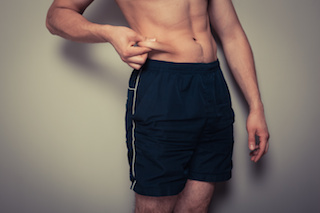 For today’s edition of Dear Mark, we’ve got a two-parter. First up, I respond to a comment from last week’s Weekend Link Love concerning fat gain and lean mass loss in taekwondo athletes on a ketogenic diet. Did the athletes actually get fatter and lose muscle on their diet, even as performance improved? After that, I discuss what to do about dandruff and an itchy scalp. There may be no silver bullet against the common malady known as dandruff, but there are a few things you can try and one in particular that looks quite promising.
For today’s edition of Dear Mark, we’ve got a two-parter. First up, I respond to a comment from last week’s Weekend Link Love concerning fat gain and lean mass loss in taekwondo athletes on a ketogenic diet. Did the athletes actually get fatter and lose muscle on their diet, even as performance improved? After that, I discuss what to do about dandruff and an itchy scalp. There may be no silver bullet against the common malady known as dandruff, but there are a few things you can try and one in particular that looks quite promising.
Let’s go:
That Taekwando study was posted on Free The Animal awhile ago. The conclusion:
“”Keto” Diet in Taekwando Athletes: Good for Performance, Less Beneficial for Body Composition – Non-Sign. Higher Muscle & Lower Fat Loss in 25% Deficit vs. Balanced Diet”
“Performance” is relative. A ketogenic diet is often detrimental to athletic performance. What’s interesting is that the athletes got fat on said ketogenic diet.
I’m really glad this was mentioned. Here’s the study (PDF).
Let’s say you’re right and these martial artists did get fat and lose muscle. They did all that while improving their 2000 meter time and reducing their anaerobic fatigue during a Wingate test (probably the toughest sprint workout ever conceived; puke buckets adjacent to the cycle ergometers are standard, to give you an idea of how tough it is). Isn’t that amazing? I mean, if they were really getting fatter and atrophying muscle mass, shouldn’t their performance markers decline?
Anyway, in the authors’ own words, the changes weren’t significant enough to mention in the results. And the method used to determine the changes, as you’ll find out, wasn’t very accurate.
The study used bioelectrical impedance analysis (BIA) to determine the athletes’ changes in body composition. This is problematic for several reasons:
BIA just isn’t accurate when it comes to measuring the loss or gain of lean body mass during weight reduction. Changes in lean body mass are consistently overestimated using BIA, especially in ketogenic dieters.
Researchers have dubbed BIA invalid for assessing lean body mass in athletes; the fluctuations in water weight throw off the results. Even “small fluid changes” are incorrectly interpreted as changes in body fat content. It simply doesn’t work.
Ketogenic dieting (and low carb dieting in general) is famous for the massive drop of water weight that occurs in the first couple weeks. For every gram of glycogen they store, our muscles retain three grams of water (PDF). As we lose muscle glycogen, either from training or going low-carb, we flush water out. This is all normal, and it’s often used to disparage the weight loss effects of low-carb diets (“Ah, you’re just losing water weight!”). Since BIA interprets water weight as lean mass, this makes a BIA-derived assessment of body fat unreliable.
There is another, better method for testing changes in body fat in athletes: the skin fold measurement. In studies directly comparing the validity of body fat measurements in athletes using skin fold measurement or BIA, the former always wins out and BIA overestimates body fatness. Let’s see what happens when you test the effects of a ketogenic diet on body composition and performance in elite athletes (gymnasts, in this case) using skin fold measurement. Back in 2012, Paoli used skin fold measurements to track changes, finding that ketogenic athletes lost body mass, lost body fat, and gained a small amount of lean mass while suffering no decrease in physical performance.
There were some differences between the gymnast keto diet and the taekwondo diet. The TKD diet was 55% fat and 40% protein, probably too high in protein to be truly ketogenic. The TKD athletes also restricted calories by 25%, while the gymnasts ate as much as they desired.
The athletes didn’t get fat, then. And performance is “relative,” I suppose, but that doesn’t invalidate the results. “Relative” to the non-ketogenic dieting athletes, the keto athletes’ performance increased. Relative to their own previous performance, the keto athletes’ performance improved. I don’t see that as a mark against their results.
Now, I’m not suggesting you can’t gain fat on a ketogenic diet. You certainly can. I’m just showing that this study in Taekwondo athletes on a ketogenic diet isn’t strong evidence in favor of it.
Hi Mark,
Thanks for the site; I love it and use it to great extent with friends and family.
I’ll keep it simple: I’ve had an itchy scalp (lots of dandruff, insane itching, dry patches) for about four years, and am currently keeping it under control with medicinal shampoo prescribed by the doctor. Primal doesn’t seem to stop it; and the moment I stop using the shampoo it comes back.
The medicinal shampoo has a 5% alcoholic coal tar extract in it as well as lots of scary ingredients like parahydroxybezoates.
Is there anything I can pinpoint the problem to – and also should I be trying to get off this shampoo ASAP because of what its active ingredients are?
Many thanks,
Andrew, UK
You could try a more “natural” alternative with fewer offensive ingredients, like Grandpa’s Pine Tar shampoo. It’s designed to work against dandruff, though some people may have allergic reactions to it. Over the counter coal tar shampoos are out there, too, so you could hunt around for one without the ingredients you don’t want.
You could do what the subjects with itchy skin and dandruff did in this study: mix raw honey with warm water (9:1 ratio, enough to make the honey nice and runny) and apply it to the affected areas every other day, making sure to rub it in for three minutes, and letting the honey solution sit on their scalps for three hours before rinsing. Big time commitment, yes, but it worked; everyone improved. After treatment, members of the honey group underwent a second trial to determine the prophylactic efficacy of honey. For six months, half of them applied the honey solution once a week. None of the honey group had a dandruff relapse, while 12 of the 15 from the group who did not use honey suffered relapses 2-4 months after the initial honey treatment.
You could do what an employee of mine did to fix his dandruff: regular ocean plunges. He’d wade out in the water, dunk his head, and scrub like crazy. An added benefit, according to him, is that the sea water gives you awesome looking hair. Worth a shot, if you’re within reach of an ocean. And if you’re not, he said he’d often “recreate” the ocean water by mixing sea salt and trace mineral drops in a glass of cold tap water.
A lot of people swear by apple cider vinegar hair soaks.
I’d say the honey looks like a good bet, if you’re willing to put in the time. Good luck!
Thanks for reading, everyone. If anyone has a dandruff/dry scalp solution that worked for them, please comment!




November 23, 2014
Weekend Link Love – Edition 323
 Research of the Week
Research of the WeekKStarr was right about “text neck”: looking down at your phone as you text is like hanging a 60 pound kettlebell from your forehead. Full study here.
The more choline you eat, the lower your risk of fatty liver disease (at least, if you’re a Chinese woman of normal weight).
Yeah, you should really just avoid tricoslan altogether.
New Primal Blueprint Podcasts
Episode 43: Interview with Jonathan Bailor, Author and Founder of Sane Solution: Jonathan Bailor, whose The Calorie Myth was a NY Times bestseller, joins us for a conversation about calories, genetics, bipedalism, how to make complex biology easier to understand (and benefit from), the effect of mental health on physical health, and much more.
Each week, select Mark’s Daily Apple blog posts are prepared as Primal Blueprint Podcasts. Need to catch up on reading, but don’t have the time? Prefer to listen to articles while on the go? Check out the new blog post podcasts below, and subscribe to the Primal Blueprint Podcast here so you never miss an episode.
How to Support Healthy Skin Bacteria
8 Strategies for Cultivating a Vitality Mindset
Just Walk It Off: How Walking Can Improve Your Emotional Well-Being
Interesting Blog Posts
How heeled shoes are killing your heel cords.
Regarding carnitine, red meat, and cardiovascular disease.
Why a campfire is so soothing.
Media, Schmedia
What your doctor isn’t disclosing.
Hey, even Bill Clinton’s gone from vegan to low-carb paleo.
Everything Else
How farming is saving veterans.
Orcas learn to speak dolphin.
Even in urban food deserts, wild edibles exist.
Why are so many heart disease patients showing up to the hospital with low LDL numbers?
Whadya know? Cooking at home is healthier than eating out.
A new GMO potato is designed to form less acrylamide (a carcinogen) when subjected to high heat (as in frying).
The good news is that time spent staring at a TV screen is down. The bad news is that staring at a smartphone screen has replaced it.
Are you a pegan?
Recipe Corner
Coffee-braised lamb shanks. A rather long recipe, but worth it.
Boy, pratiem prik thai short ribs with quick-pickled carrots really do look good, don’t they?
Time Capsule
One year ago (Nov 23 – Nov 29)
The Benefits of Giving Thanks – It turns out that giving thanks is a little selfish – and that’s a good thing.
A Primal Thanksgiving Menu (plus a Contest) – A few ideas for your Thanksgiving feast.
Comment of the Week
I prefer to think of them as my minions… denizens of planet Steve, to whom I kindly grant access to various resources in return for small favours (providing they behave themselves of course).
– I like the way this guy thinks.
You CAN Lose Weight and Get Healthy. Find Out How>>



November 22, 2014
Crock Pot Turkey and Primal Stuffing
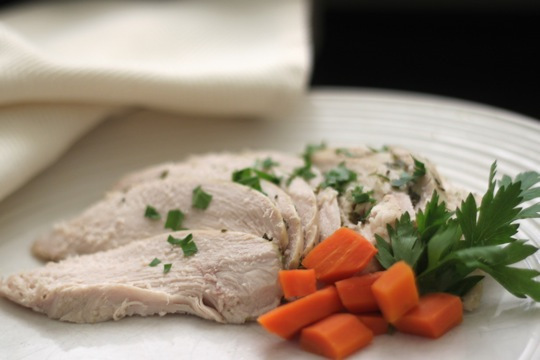 It’s easy to associate cooking a turkey with a long, laborious process and a huge amount of meat. But it doesn’t have to be that way. Whether you’re cooking Thanksgiving dinner for only 1 or 2 people, or you’re looking for an easier way to cook turkey so you can banish processed deli turkey from your life, this recipe for Crock-Pot turkey breast is what you need.
It’s easy to associate cooking a turkey with a long, laborious process and a huge amount of meat. But it doesn’t have to be that way. Whether you’re cooking Thanksgiving dinner for only 1 or 2 people, or you’re looking for an easier way to cook turkey so you can banish processed deli turkey from your life, this recipe for Crock-Pot turkey breast is what you need.
Turkey breasts on the bone are sold in most grocery stores year round. Crock-Pots are known for keeping meat moist and tender over a long, slow cooking time and turkey breast is no exception. Rub the bird down with herbs and butter (or just season liberally with spices), leave it alone for 7 hours, and return to a house that smells like Thanksgiving – even if it’s the middle of summer. No fuss, no muss.
This recipe cooks the turkey on a simple bed of shallots, celery and carrots but you can add as many different types of root vegetables as you like. One turkey breast half will easily feed two people, but leftovers aren’t likely. (One breast is probably enough if you just want some sliced turkey for lunches/salads during the week) If you want more meat, you can add another turkey breast to the Crock Pot without changing much else in this recipe; just add a little more butter, herbs and salt.
Looking for more complex Thanksgiving recipes? Instead try heritage turkey and mashed parsnips or roast goose.
Crock Pot Turkey
Servings: 2 to 4
Time in the Kitchen: 15 minutes of hands-on cooking and 4+ hours in the Crock-Pot
Ingredients:

4 to 6 shallots, thinly sliced
6 stalks of celery, chopped
2 carrots, chopped
3 tablespoons unsalted butter (30 g)
1/4 cup finely chopped parsley (60 ml)
2 tablespoons finely chopped fresh sage (30 ml)
1 teaspoon kosher salt (5 ml)
One single bone-in turkey breast (about 2 pounds/900 g) or 2 bone-in turkey breasts (about 5 pounds/2.3 kg)
1 cup hot water or chicken stock
Instructions:
Lightly oil the bottom of the slow cooker.
Spread the shallot, celery and carrots out on the bottom of the slow cooker.
Melt the butter in a bowl and stir in the parsley, sage and salt.
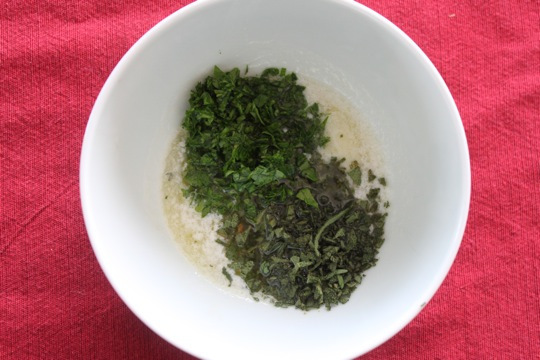
Place turkey breast on the veggies, skin side up, and rub it down completely with the butter and herbs. Pull up the skin and rub the meat as well.
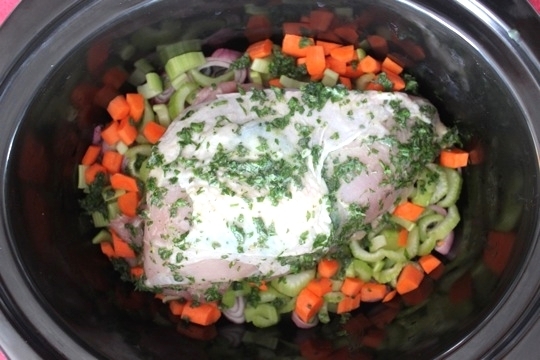
Pour the hot water or stock around the turkey.
Secure the lid and cook on low until the meat is tender and the internal temperature reaches 165 ºF/74 ºC. This will take anywhere between 4 to 7 hours.
Let the turkey rest for 20 minutes or so before slicing.

Primal Stuffing
 At some holiday tables, stuffing is just as important as turkey on Thanksgiving. If you live in one of these homes and have been missing stuffing on Thanksgiving, or making a traditional recipe but wishing you had one that was more in-tune with the way you prefer to eat, then now is the time to give thanks. Finally, there is a Primal stuffing recipe (made from bread!) that can grace your table.
At some holiday tables, stuffing is just as important as turkey on Thanksgiving. If you live in one of these homes and have been missing stuffing on Thanksgiving, or making a traditional recipe but wishing you had one that was more in-tune with the way you prefer to eat, then now is the time to give thanks. Finally, there is a Primal stuffing recipe (made from bread!) that can grace your table.
Yes, you read that correctly. The key ingredient in this recipe is bread. But not just any bread. This special loaf is straight from Primal Cravings, a cookbook full of fun and flexible recipes guided by primal/paleo principles. While the bread gives the stuffing the texture and bready flavor you might crave, bread isn’t the only thing this stuffing is all about. It’s also loaded with sausage, spinach, leeks and parsley. The flavor is rich, comforting and satisfying.
So if this recipe strikes your fancy, then proudly slide this stuffing onto the table, right next to the turkey. It just might become a new family tradition.
Looking for a totally bread-free stuffing? Try cauliflower and mushrooms stuffing or egg and sausage stuffing.
Servings: 6 to 8
Time in the Kitchen: 2 hours to make the bread, 1 hour 25 minutes to make the stuffing.
Primal Cravings Bread
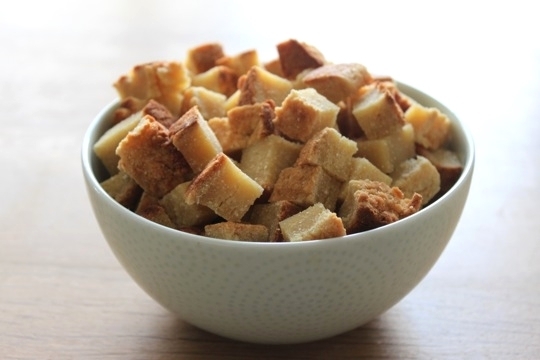
Dry Ingredients:
3/4 cup tapioca flour (90 g)
3/4 cup potato starch (90 g)
1/4 cup coconut flour (30 g)
2 teaspoons baking powder (10 ml)
1 teaspoon salt (5 ml)
Wet Ingredients:
3/4 cup very warm water (180 ml)
1 tablespoon honey (15 ml)
2 1/4-ounce packages Fleischmann’s Rapid Rise yeast (14 g)
3 tablespoons butter, melted (30 g)
2 eggs
2 teaspoons powdered gelatin (10 ml)
Instructions:
Combine water and honey in a medium bowl. Sprinkle in yeast. Whisk together and let sit for a minute or two until the yeast is activated (noticeable by the pale foam that will develop on the surface of the water). Whisk in butter, eggs and powdered gelatin.
Whisk together dry ingredients in a large bowl.
Pour the wet ingredients into the dry ingredients. Whisk thoroughly, making sure there are no lumps.
Preheat oven to 375 ºF/190 ºC. Place a sheet of plastic wrap tightly over the bowl and let the dough rise on top of the preheating oven or in a warm, draft-free corner for 1 hour.
Lightly grease a 1.5 quart glass loaf pan, and place dough in it.
Bake until the bread is lightly browned on all sides, about 45 minutes to 1 hour.
Stuffing Ingredients:

1 loaf of stale* Primal Cravings bread, cut into small cubes (*to make the bread stale, cut the bread into cubes and let dry overnight, or toast the cubes in oven at 350 ºF until the bread is about as crunchy as croutons)
1 pound sweet Italian sausage, casings removed (450 g)
1 leek, finely chopped
8 ounces mushrooms, thinly sliced (230 g)
1/2 cup finely chopped celery (75 g)
8 ounces chopped frozen spinach, defrosted and well squeezed to remove moisture (230 g)
1/4 cup finely chopped parsley (60 ml)
2 eggs, whisked
1 cup chicken broth (240 ml)
1/2 teaspoon kosher salt (2.5 ml)
1/4 teaspoon black pepper (a pinch)
Instructions:
Put the sausage in a large saucepan with a little oil over medium-high heat, breaking the sausage into small pieces as it cooks. When the sausage is done, transfer it from the saucepan to a large bowl, leaving any grease in the saucepan.
In the same saucepan, saute the leek, mushrooms and celery until soft. (If there’s not enough grease from the sausage, add olive oil first)
Preheat oven to 350 °F/177 °C.
Butter a baking dish and set aside.
To the large bowl of sausage, stir in the leek, mushroom, celery, spinach, parsley and eggs. Add the cubes of bread, then the chicken broth, salt and pepper, mixing really well to cover.

Spread the stuffing out in a thin even layer in the baking dish. Cover with foil, bake 25 minutes. Remove foil. Raise heat to 450 °F/232 °C and bake until the top is golden brown, about 20 minutes. Serve alongside turkey and enjoy!

Not Sure What to Eat? Get the Primal Blueprint Meal Plan for Shopping Lists and Recipes Delivered Directly to Your Inbox Each Week



Mark Sisson's Blog
- Mark Sisson's profile
- 199 followers


